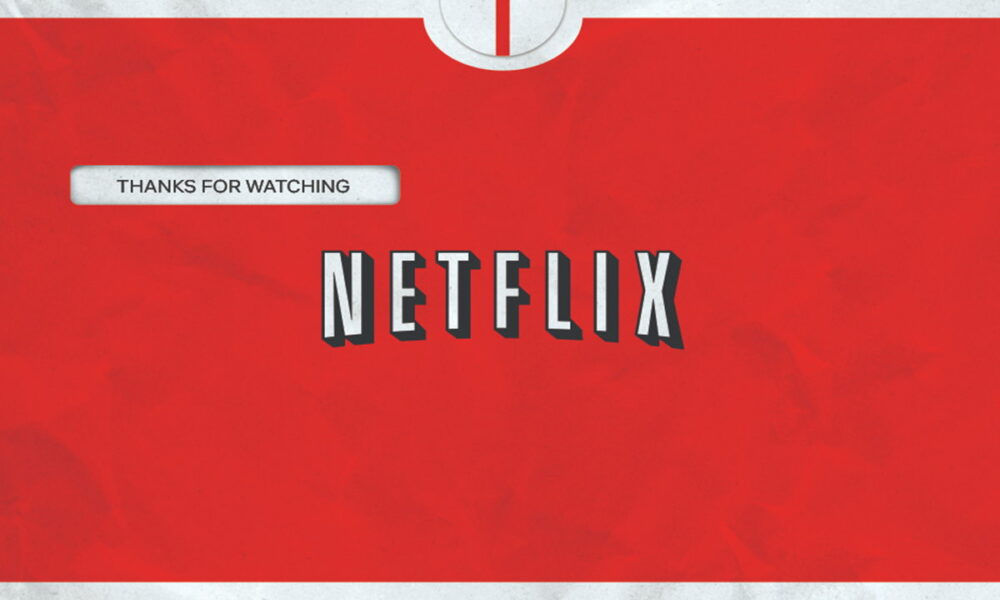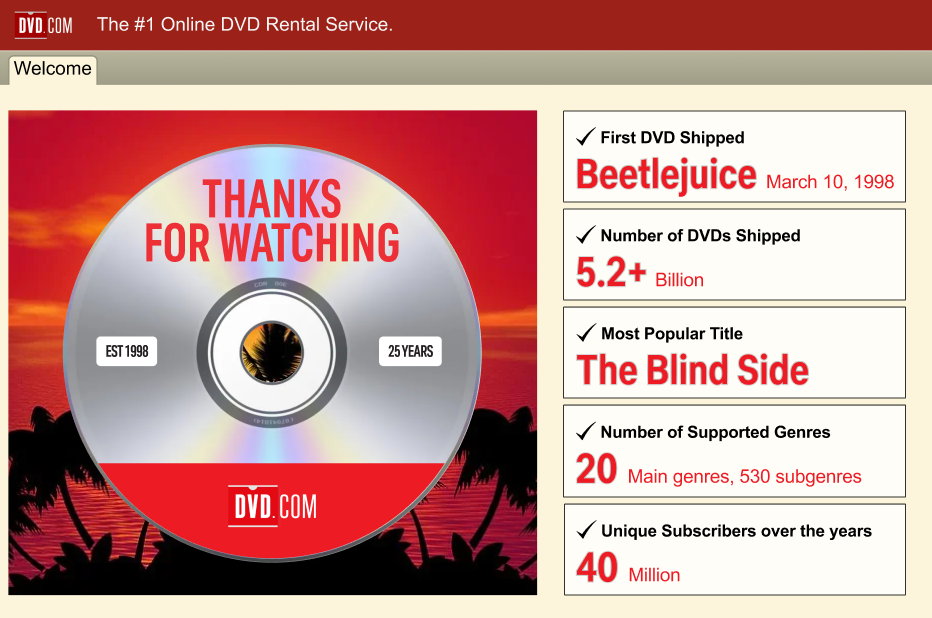
Most consumers who enjoy Netflix content today are unaware that the streaming giant debuted in 1998 with a dvd rental service (later added the Blu-ray format) with mailing for a monthly fee. This service, innovative for the time, underpinned the decline of physical video rental stores, including the largest in the world with which it competed.
Today, Netflix leads the video streaming market, but the service the company started with it will close soon. In an official announcement, co-CEO Ted Sarandos revealed that the record rental service will close on September 29 and explained the importance it had for the company at the time: “Those iconic red envelopes changed the way people watched shows and movies at home and paved the way for the shift to streaming”.
In the announcement, Netflix offers some interesting information about the service, such as sending 5.2 billion records by mailthat the first movie to be shipped was Beetlejuice on March 10, 1998, or that at its peak, more than 40 million people had a subscription to a novel service that saved customers from having to physically go to a store and wait for was available: you requested something and Netflix sent it to your home.
end of another era
The closure of the Netflix service is in line with the loss of use of its format, optical media. After the massive use of floppy disks in the 1980s and 1990s as an external storage standard for computers or as a format for distributing software or video games, the advent of CD-ROM represented an impressive leap in the storage industry and limited the use of floppy disks. of the floppy disk, today practically disappeared.
CD-ROM evolved into CD recordable and rewritable (CD-R/CD-RW) and then DVD. At the time widely used, its use has been declining in all sectors including Audio CD for music. As for high-definition optical formats, also used by Netflix and closed as of September, they had an impact when Sony managed to establish Blu-ray as the standard after a fierce battle with Toshiba. But it was a losing war and the format has barely been maintained due to its use on video game consoles.
And it is that The increase in the use of streaming technologies is unstoppable and it has caused great changes in the distribution formats of multimedia content, with great drops in sales in the recording or storage in optical media. In music, on-demand services win by a landslide and the same can be said of movies and series. In computers, its use is minimal and almost no new PC includes players/recorders for optical media, betting on internal storage with SSDs as the protagonist or external drives (microSD, USB) that are increasingly cheaper, safer and more convenient to move data between devices.
The world of videogames is special and its operation has to some degree escaped the trend for reasons of resale, collecting, sharing or for being the format chosen by Sony and Microsoft for their consoles. However, digital distribution platforms for PCs such as Steam have been a complete success and continue to grow, pointing to the changes that have occurred in other types of content. On-demand game service like NVIDIA’s GeForce Now or subscription services like Microsoft’s Xbox Game Pass will end up burying optical media.
in video distribution streaming services take over and Netflix DVD and Blu-ray rentals make little sense and few customers. Its closure was sung.




